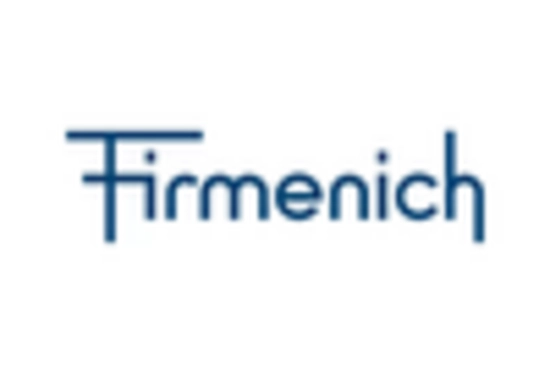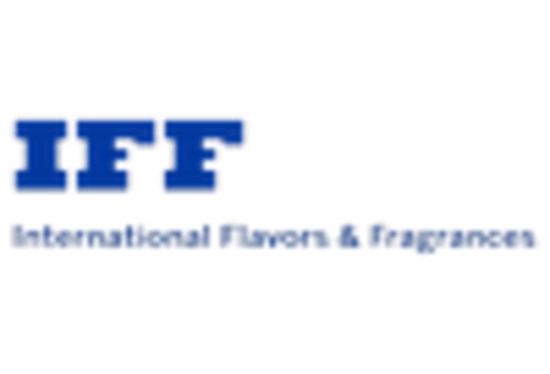Health and Wellness Trends
The increasing focus on health and wellness among consumers appears to be a primary driver for the Taste Modulators Market. As individuals become more health-conscious, they seek alternatives that enhance flavor without compromising nutritional value. This trend is reflected in the growing demand for low-sugar, low-sodium, and low-calorie products. According to recent data, the market for sugar substitutes is projected to reach substantial figures, indicating a shift towards healthier eating habits. Consequently, manufacturers are investing in taste modulators that can provide sweetness or saltiness without the associated health risks. This shift not only caters to consumer preferences but also aligns with regulatory pressures to reduce sugar and sodium levels in food products, thereby propelling the Taste Modulators Market forward.
Innovation in Food Technology
Technological advancements in food processing and flavor enhancement are significantly influencing the Taste Modulators Market. Innovations such as encapsulation techniques and flavor release mechanisms are enabling manufacturers to create more effective taste modulators. These technologies allow for the precise delivery of flavors, enhancing the overall sensory experience of food products. Market data suggests that the flavoring agents segment is expected to witness considerable growth, driven by these technological innovations. As companies strive to differentiate their products in a competitive landscape, the integration of advanced food technologies becomes crucial. This not only improves product appeal but also supports the development of healthier options, thereby fostering growth within the Taste Modulators Market.
Consumer Demand for Clean Label Products
The rising consumer demand for clean label products is reshaping the Taste Modulators Market. Shoppers are increasingly scrutinizing ingredient lists, favoring products that are perceived as natural and free from artificial additives. This trend has prompted manufacturers to explore natural taste modulators derived from plant sources, which can enhance flavor while meeting clean label criteria. Market analysis indicates that the clean label segment is expanding rapidly, with consumers willing to pay a premium for products that align with their values. As a result, companies are reformulating existing products and developing new offerings that utilize natural taste modulators, thereby driving growth in the Taste Modulators Market. This shift not only addresses consumer preferences but also aligns with broader sustainability goals.
Expansion of the Food and Beverage Sector
The ongoing expansion of the food and beverage sector is a significant driver for the Taste Modulators Market. As the global population continues to grow, the demand for diverse and flavorful food options is increasing. This trend is particularly evident in emerging markets, where rising disposable incomes are leading to greater consumption of processed and convenience foods. Market projections suggest that the food and beverage industry will continue to expand, creating opportunities for taste modulators that enhance flavor profiles. Manufacturers are responding to this demand by incorporating taste modulators into their products, thereby improving taste without compromising on health. This expansion not only supports the growth of the Taste Modulators Market but also encourages innovation in flavor enhancement solutions.
Regulatory Support for Healthier Food Options
Regulatory frameworks aimed at promoting healthier food options are playing a pivotal role in the Taste Modulators Market. Governments worldwide are implementing policies to reduce sugar and sodium levels in food products, which is encouraging manufacturers to adopt taste modulators as viable alternatives. These regulations create a favorable environment for the development and adoption of innovative flavor enhancement solutions. Market data indicates that regions with stringent food regulations are witnessing a surge in the demand for taste modulators, as companies seek to comply with these standards while maintaining product appeal. This regulatory support not only drives innovation but also enhances the overall growth prospects of the Taste Modulators Market.

















Leave a Comment